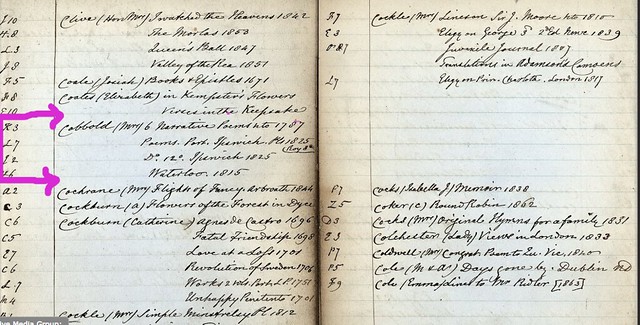This chapter of our presentation illustrates the transcription process for Elizabeth Cobbold’s entries in the Catalog manuscript.
The manuscript catalog entries for Cobbold tell us which of her works were available for acquisition in the mid-19th century. The works in Stainforth’s library by Elizabeth Cobbold can be found on two consecutive pages of his catalog: n97 and n99 in our online edition in CU’s Digital Library.
We transcribe by the page and by Line #, not by author. Here are screenshots of our transcription forms. These forms send data collected to a MySQL relational database, managed by Holley Long. This is one aspect of our project that we are in the process of revising to ensure that we gather data efficiently and also with integrity regarding the aims of the project. Here is a description of our early processes that we used to gather data for proof-of-concept and for early grant proposals: We select a page to transcribe from a list of pages in Google Drive called Pages_to_be_transcribed. Here is an example of such a page. Notice the page number in the upper right-hand corner and how each line is numbered in red. Important: as soon as we open a page to transcribe, we move it to the “completed” folder in order to prevent two transcribers working on the same page. (This also means, however, that once a transcriber begins a page, she must complete work on that page during that work session.)
With the manuscript open to the correct page, we open the transcription form, also available in Google Drive. At the same time as we transcribe the ms as it reads, we also enter a complete publication record for each work on this page. We use the ms as well as the Sotheby’s catalog entries, Worldcat, and other online resources to obtain the most complete set of publication data possible.
When a both transcription forms are complete for a given work, a transcriber submits them to the database and selects a new PDF page image to transcribe.
